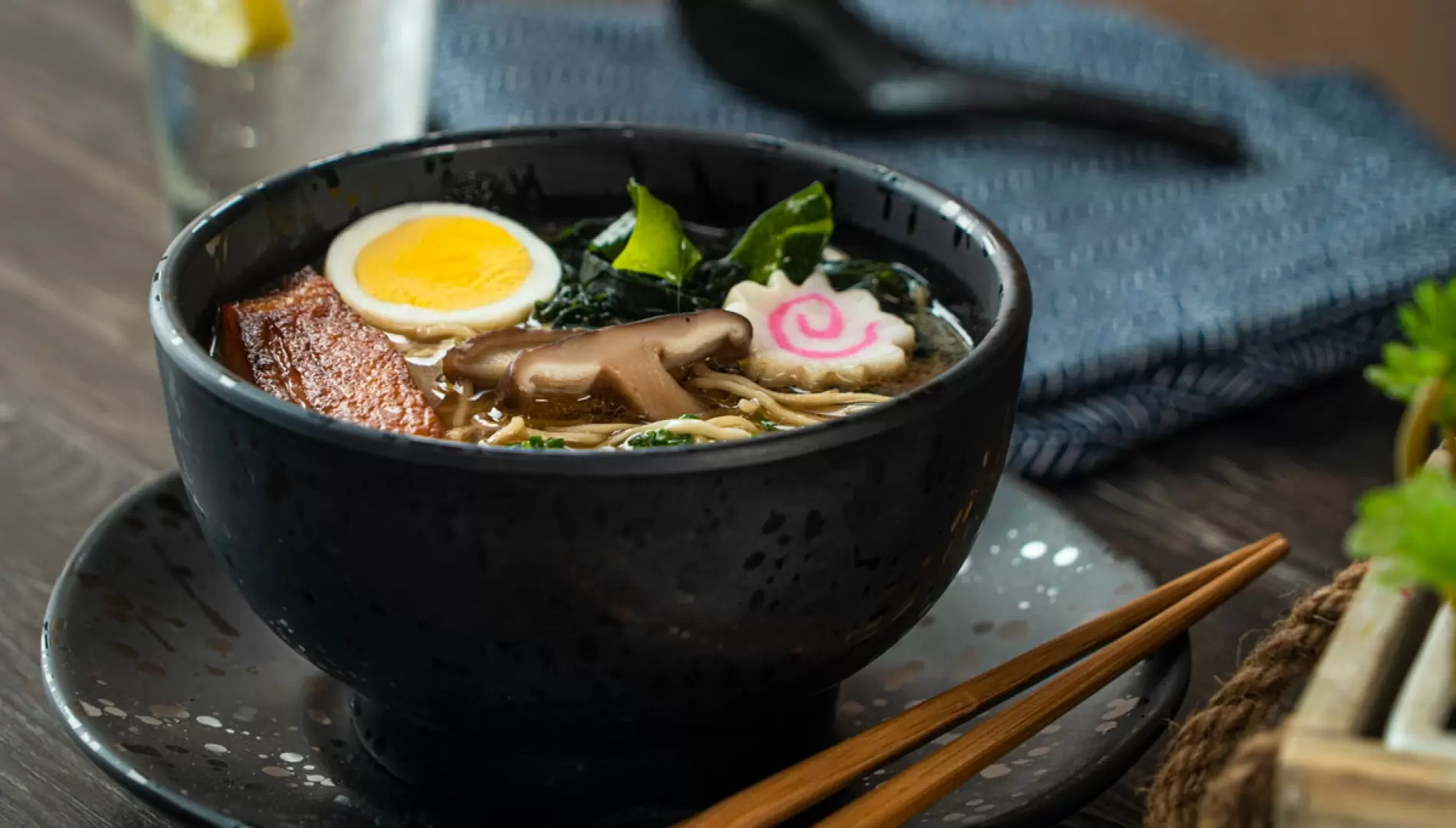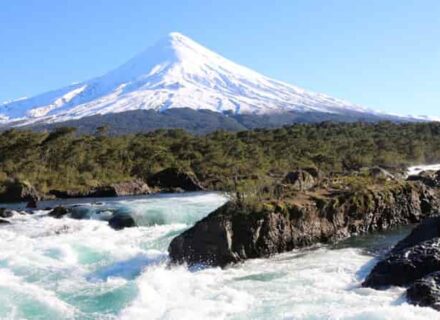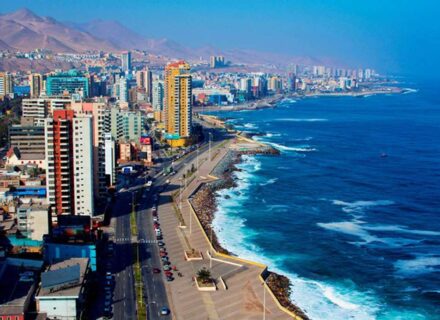Sushi & Sashimi
I think I ate my body weight in sushi when I travelled to Japan. One of the best sushi meals we had was in a tiny restaurant hidden in the Nishiki Market in Kyoto. It offered a conveyor belt experience, where you pick up the plates that come round on a rotating loop. I have often found in London that these restaurants tend to be pretty subpar but in Japan the sushi is made fresh in front of you, often with several sushi chefs working at an impressive speed.
Seafood lovers should also pay a visit to Tsukiji market in Tokyo. There are heaps of stalls and restaurants offering delicious seafood, from huge spider crabs to baby octopus on a stick! Sushi and sashimi does not have to be just seafood either. As well as the obvious vegetable rolls, you may also find sushi and sashimi made from beef, horse and even chicken! (We were not brave enough to try the latter.)
Fun fact – Although sashimi tends to be more expensive as it is more fish, it is sushi which is considered more of a privilege to eat. To make sushi in Japan you need to be a trained ‘sushi master’ and adept to the rolling of the rice and seaweed.
Gyozas
How many gyozas is too many gyozas? Answer: None. You can never have too many. Fried, grilled or boiled, chicken, pork or vegetables, I love all of these dumplings equally. Whether you are having them as a quick snack in between sightseeing or ordering them alongside other dishes, these delicious pot-stickers can be found all across Japan. You usually get 6 dumplings a portion, served with dipping sauces including soy and chilli.
Kushiyaki
Kushiyaki is the term for all grilled meat on skewers, commonly found at street food spots and isakayas – bars often serving small plates of food. Yakitori is some of the most popular kushiyaki – grilled chicken served on a skewer, accompanied with soya sauce for dipping.
For a lively night out head to Omoide Yokocho in Shinjuku. Previously an illegal drinking spot in World War II, it gained a long standing nickname, the unfortunate ‘Piss Alley’ due to the many local residents who often relieved themselves after a raucous night of drinking.
The tiny street has retained its historical vibe (albeit without the urine!). Packed tightly with isakayas and yakitori spots, it’s a glimmer of old Japan in a region of Tokyo which screams modernity. Grilled meat is king here and most of the chicken is eaten! Sit on a crate, make friends with a local sitting next to you and order kushiyaki washed down with bottles of beer.
Kobe Beef
Anyone who loves a good steak needs to treat themselves to Kobe beef at least once in their life. People often get confused with the differences between Wagyu and Kobe beef but Wagyu actually refers to the four Japanese breeds of beef cattle which Kobe is one of. It is bred from the Tajima breed found only in the Hyōgo Prefecture on Honshu Island – any other beef not bred here cannot be marketed as Kobe beef.
So what makes it so special (and expensive?)
As far as beef goes, Kobe beef is fairly limited, with only 3000 herds of cattle bred during the year. This makes the price shoot up dramatically, especially when importing to other countries. You may find some menus in Japan offering Kobe-style beef, where a Wagyu breed has been bred with more common cattle.
Anyone who has been lucky enough to taste Kobe often refers to the extreme tenderness of the meat and the delicious flavour. It has a high marbling ratio which gives it a delicious flavour. It is also rumoured that the cattle have an indulgent rearing process, where they are given a daily massage (is it weird to be jealous of cows?). It is also rumoured that classical music is played, especially while they eat and that in itself is a unique diet of soybeans and dried grass.
If you have the Japanese yen to hand it is quite easy to enjoy a Kobe beef experience, many high end restaurants in Tokyo will offer it on the menu. You can enjoy the meat in a variety of ways – raw like sashimi, as a delicious steak or even the traditional shabu-shabu – a hot-pot where thin slices of beef are boiled in hot water.
Okonomiyaki
There are some dishes in Japan that are specialities to a particular destination and okonomiyaki is just that. The city of Hiroshima puts its own spin on the pancake-style dish and there are restaurants dedicated to just serving this meal. It is made from a thin layer of batter topped with lots of cabbage and either soba or udon noodles. From there you can choose your own toppings, usually pork, seafood or cheese. It is finished with seaweed flakes, bonito flakes and a thick okonomiyaki sauce, similar in consistency to Worcester sauce. Although you can find okonomiyaki in other regions of Japan like Osaka, the Hiroshima version layers the ingredients on top of each other rather than mixing them in.
The best way to eat them is around the griddle itself watching the chefs cook up a storm, the only hard thing will be choosing what toppings you want!
Ramen
Ah ramen, the choice of budget-conscious travellers and university students alike. Unlike the pre-packaged, over salted versions you get from the local supermarket, Japanese ramen or ‘noodle soup’ is a delicious, hearty meal found all over in Japan. A bowl of ramen will vary in soup base, but the noodles are made from wheat and tend to be long and thin.
A popular ramen choice is Tonkotsu, made from pork bones which are boiled down. Although it may not sound appealing it is packed with flavour and often includes chicken broth too. One of the most commonly found ramen choice is Shoyu – a clear broth combining chicken stock and soy sauce. It often has vegetables, pork or chicken in it as well, making it a great, filling meal for hungry travellers.
Our Southern Japan tour heads to the city of Fukuoka. Here you can find yatai – open air food stalls which seat 6-10 people. Along with grilled meat, many of these stands serve bowls of the local Hakata ramen which is similar to that of Tonkotsu ramen.
Nabe
Japan can get very cold in winter so nabe, a hearty, warming sharing sized hotpot is just the ticket. A cast iron or clay pot is set upon a gas burner at your table filled with broth, and you can add your raw ingredients to cook within it. You usually get a variety of vegetables plus pork and seafood which you can throw in to make it bursting with flavour. Nabe is meant for sharing so make sure you coerce your pal or travelling buddy into ordering one of these bad boys!



